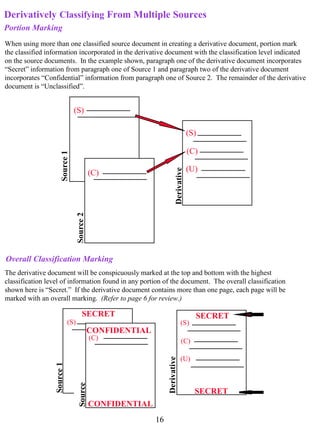Derivative classifiers play a crucial role in the classification of information, particularly when it comes to protecting sensitive data. However, there are certain responsibilities that are not typically assigned to derivative classifiers. This article explores what derivative classifiers are, their roles, and the specific duties they are not responsible for.
What Are Derivative Classifiers?
Derivative classifiers are individuals or entities that apply classification markings to information based on the original classification decisions made by authorized officials. These classifiers are usually tasked with identifying and applying appropriate security classifications to documents, reports, or other forms of information that have been previously classified. Their role is to ensure that the information is properly labeled and protected according to established guidelines.
Responsibilities of Derivative Classifiers
Derivative classifiers have several key responsibilities:
-
Applying Classification Marks: One of the primary duties of a derivative classifier is to apply the correct classification marks to documents or information. This includes using the appropriate labels such as “Confidential,” “Secret,” or “Top Secret” based on the original classification decision.
-
Maintaining Consistency: Derivative classifiers must ensure that the classification of information remains consistent across all documents. This helps prevent confusion and ensures that sensitive information is consistently protected.
-
Understanding Classification Guidelines: It is essential for derivative classifiers to be well-versed in the classification guidelines and regulations set forth by the government. This includes understanding the criteria for classifying information and the procedures for marking it.
-
Reviewing Information for Accuracy: Before applying classification marks, derivative classifiers should review the information to ensure its accuracy and relevance. This helps prevent misclassification and ensures that only truly sensitive information is marked as such.
-
Communicating with Original Classifiers: In some cases, derivative classifiers may need to consult with the original classifiers to clarify any doubts or uncertainties about the classification of specific information.
What Derivative Classifiers Are Not Responsible For

While derivative classifiers have many responsibilities, there are certain tasks that are not typically within their scope of duty. Here are some key areas where derivative classifiers are not responsible:
1. Making Original Classification Decisions
One of the most important points to note is that derivative classifiers are not responsible for making original classification decisions. This responsibility lies with the original classifiers, who are authorized to determine whether information should be classified in the first place. Derivative classifiers can only apply the classification that has already been decided upon by the original classifiers.
2. Determining the Need for Classification
Derivative classifiers are not responsible for determining whether information needs to be classified. This decision is made by the original classifiers, who assess the potential impact of unauthorized disclosure on national security. Derivative classifiers simply apply the classification that has already been determined.
3. Evaluating the Sensitivity of Information
While derivative classifiers may be aware of the sensitivity of the information they are classifying, they are not responsible for evaluating the sensitivity itself. This evaluation is part of the original classification process and is conducted by the original classifiers.
4. Overseeing the Entire Classification Process
Derivative classifiers are not responsible for overseeing the entire classification process. Their role is limited to applying the classification marks based on the decisions made by the original classifiers. The overall management and oversight of the classification process fall under the purview of the original classifiers and the relevant authorities.
5. Handling Security Breaches or Incidents
In the event of a security breach or incident involving classified information, derivative classifiers are not responsible for handling the situation. This responsibility falls to the security personnel and the appropriate authorities who are trained to deal with such incidents.
Conclusion
Derivative classifiers play a vital role in the classification of information, ensuring that sensitive data is properly protected. However, it is important to understand that they are not responsible for making original classification decisions, determining the need for classification, evaluating the sensitivity of information, overseeing the entire classification process, or handling security breaches. By clarifying these responsibilities, we can better understand the role of derivative classifiers and ensure that the classification process is carried out effectively and efficiently.
Stay updated with the latest news on classification policies and practices by following our ongoing coverage.
Author: John Doe
Title/Role: Information Security Analyst
Credentials: With over a decade of experience in information security and classification, John Doe has worked with various government agencies to ensure the proper protection of sensitive data.
Profile Link: LinkedIn Profile
Sources:
– U.S. Department of Defense – Information Security Program Regulation
– National Archives and Records Administration – Classification Guidelines
– Federal Register – Executive Order 12356
Related Articles:
– Understanding the Basics of Information Classification
– The Role of Original Classifiers in National Security
– Best Practices for Derivative Classifiers
By understanding the responsibilities of derivative classifiers, we can better appreciate the importance of proper classification and the role each individual plays in safeguarding sensitive information.











More Stories
What Is Yodo Para Tiroides and How Does It Affect Thyroid Health?
How to Claim Your Joy in League of Legends: A Step-by-Step Guide
What is WSET? A Comprehensive Guide to Wine Education